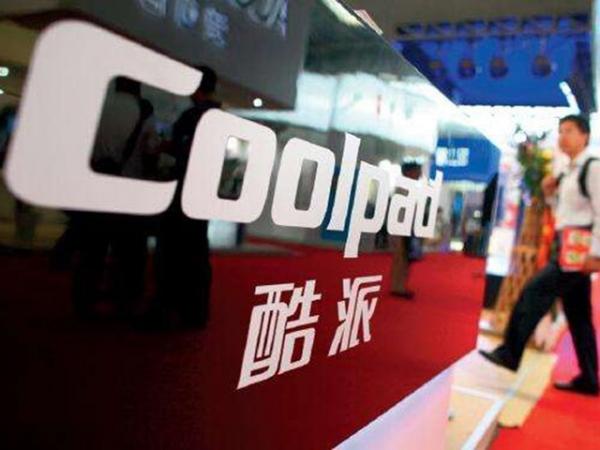The Rise and Fall of a Budget Phone Giant: Coolpad’s Journey from Glory to Decline
Coolpad, once a prominent player in China’s smartphone market, was a household name due to its budget-friendly devices. Its success in the early days of the smartphone era stemmed from strategic partnerships and high-value offerings. However, the company’s lack of innovation, strategic missteps, and fierce competition led to a steady decline in its market share. This article explores Coolpad’s meteoric rise, its financial struggles, and the challenges it faces as it seeks to reinvent itself.

Image Source: Antutu
1. From Budget King to Market Decline: Coolpad’s Journey
Coolpad achieved significant success in the early smartphone market, particularly in the low- and mid-tier segments. Its affordable “budget phones” captured the attention of cost-conscious consumers. Below are some key factors contributing to Coolpad’s initial success:
1.1 Competitive Pricing and the Budget Phone Strategy
Coolpad’s focus on affordable devices made it a favorite among budget-conscious users, particularly in smaller cities. Despite their lower price points, Coolpad devices offered competitive hardware specifications.
1.2 Partnerships with Telecom Operators
Coolpad collaborated with telecom giants like China Mobile to offer carrier-branded, customized smartphones. This partnership helped Coolpad penetrate rural markets and second-tier cities, building a robust user base.
1.3 Market Share Growth
Between 2014 and 2016, Coolpad held a significant portion of the market, with its share peaking at over 10%. However, the rise of competitors and Coolpad’s slower pace of innovation gradually eroded its position.
2. The Fall of a Giant: Declining Market Share
As competition intensified and innovation lagged, Coolpad’s market share steadily declined. Below is a table illustrating Coolpad’s market share trends:
| Year | Domestic Market Share | Key Drivers of Change |
|---|---|---|
| 2015 | 10% | Dominated the budget phone segment through partnerships with carriers. |
| 2016 | 9% | Faced increased competition; innovation began to lag. |
| 2017 | 7% | Rivals like Huawei, Xiaomi, and OPPO gained traction. |
| 2018 | 4% | Struggled to adapt to emerging 5G and AI technologies. |
| 2019 | 2% | Brand recognition faded; lacked online channel presence. |
| 2020 | 1% | Nearly exited the domestic market. |
| 2021 | 0.5% | Shifted focus to real estate and leasing. |
3. Financial Struggles: Narrowing Losses but Dim Prospects
Coolpad’s financial health remains precarious despite recent cost-cutting measures. The table below summarizes Coolpad’s financial data from 2022 to mid-2024:
| Year | Net Loss (HKD) | Gross Profit/Loss (HKD) | Key Revenue Sources |
|---|---|---|---|
| 2022 | -625M | -5M | Smartphone sales, carrier contracts. |
| 2023 | -225M | +100M | Asset sales, real estate leases. |
| 2024 (H1) | -95M | +120M | Land sales, property leasing. |
Key Insights:
- Losses Narrow but Persist: Coolpad’s net losses have steadily decreased, but the company remains in financial trouble. Recent improvements largely stem from cost reductions and a pivot to low-cost e-commerce strategies.
- Reliance on Asset Liquidation: Much of Coolpad’s revenue comes from selling land and non-core assets, a strategy that offers temporary relief but fails to provide sustainable growth.
4. Missed Opportunities and Competitive Pressures
Several factors contributed to Coolpad’s market decline:
- Lagging Innovation: Coolpad failed to keep pace with advancements in 4G, 5G, and AI technologies, leaving it behind competitors like Xiaomi and Huawei.
- Ineffective Transition: Although Coolpad diversified into real estate and leasing, it did not rejuvenate its smartphone business.
- Fierce Competition: Brands such as Huawei, OPPO, and Vivo expanded aggressively, leveraging innovation and robust marketing strategies.
5. Can Coolpad Stage a Comeback?
While Coolpad’s current situation appears grim, there is potential for a revival if the company adopts bold strategies:
- Focus on Innovation: Investments in 5G, AI, and IoT technologies could create differentiation and new market opportunities.
- Rebrand for Younger Audiences: Strategic marketing campaigns targeting younger consumers could revitalize Coolpad’s brand image.
- Strengthen E-commerce Channels: Collaborating with major e-commerce platforms could boost Coolpad’s visibility and sales.
- Diversify Revenue Streams: Expanding into IoT and smart home markets could provide new growth avenues.
Conclusion
Coolpad’s transformation from a budget phone giant to a struggling player is a cautionary tale of missed opportunities and the importance of innovation. While its market share and finances paint a challenging picture, strategic changes could help Coolpad rediscover its relevance in the ever-evolving tech industry.
